- Home
- Mark Twain
Tales, Speeches, Essays, and Sketches Page 3
Tales, Speeches, Essays, and Sketches Read online
Page 3
This sort of comedy that thrives on pretended ignorance is frequently generated out of Twain’s own private confidence in his abilities and mastery of the subject at hand rather than out of some deep-seated anxiety or insecurity. In “An Encounter with an Interviewer,” for example, he pretends to be ignorant of a relatively new form of journalism, the interview. This was a vehicle of self-representation Twain would later come to know all too well, but even in 1874, when he wrote the sketch, he regarded the practice with the amused skepticism of a practiced journalist. Burlesque and parody are grounded in easy and familiar acquaintance with the conventions to be scrutinized and lampooned, and in this imagined encounter of only a few pages Twain manages to mangle biography, history, memory, identity, even simple arithmetic with comic and generous charm. Much of the comedy of situation in “Old Times on the Mississippi,” to cite another familiar example, comes out of the dramatized ignorance, cockiness, and ineptitude in this young man from Hannibal, Missouri. Yet Horace Bixby, under whom Clemens served as an apprentice riverboat pilot, once observed that this “cub” eventually came to know the River as well as anyone alive. In his “Map of Paris,” the visual joke is founded on the narrator’s absolute ignorance of printing and engraving, an unlikely premise for a man who was a very capable typesetter from an early age.
A rather more tender version of self-parody is observable in “A Cat Tale,” which dramatizes the narrator’s strained attempts to improvise a children’s story and at the same time conveys some sense of Twain’s deep affection for his daughters, Susy and Clara, and the quality of his domestic life. It was written in 1880, the same year his third daughter, Jean, was born, and may adequately render the depth of parental feeling, the sort of daily fun, and the reassurances of quiet family attachments that Twain cherished; “A Cat Tale” offers a glimpse of Twain’s private life and personal affections that he rarely shared with his reading public. By the end of the 1880s, however, things had begun to fall apart and his domestic and personal peace was threatened. All of the family members, including Twain himself, were plagued by chronic ill health. At least as early as 1891, it was clear that his publishing company, Charles Webster and Company, was going under. At about the same time it became apparent that his confident and prolonged investments in the Paige typesetting machine (sometimes averaging around $3,000 a month for years at a time) were unrecoverable. By 1900, he had become disillusioned with U.S. involvement in the Philippines and eventually became ashamed of his country and his race. In 1896 his daughter Susy died; in 1897 it was his brother Orion; in 1904 his wife, Livy; in 1909 his daughter Jean.
The personal consequences of these losses, it should go without saying, were feelings of bitterness, resentment, guilt, and outrage. For some fifty years after Twain’s death, the darker portions of his late writings and particularly the notion that life may be at once a cruel dream and a Providential deceit (whether hatched by God or Satan hardly matters) were adequately represented in anthologies and collections by The Mysterious Stranger. Since 1963, however, it has been known that this story, as interesting as it is, is in fact a hybrid made up of portions of three different texts and amounts to editorial fraud concocted by Twain’s literary executor and an editor from the Harper’s publishing house and published by them in 1916. The Mysterious Stranger clearly does not represent Twain’s literary intentions, and in the absence of a single and tidily representative text for these late years, the last half dozen selections in this collection ought to sufficiently convey the quality of Twain’s sense of personal despair, angry cynicism, and injured hope.
Even so, there is nothing sinister in Twain’s black humor and his fables of despair. He often suppressed or deferred the publication of the bitterest of his disclosures, and he insisted that the bulk of his Autobiography and other of his writings should not be published until after his death, in part because he deemed them too shocking for public consumption, but also because he believed that by adopting a persona who spoke from the grave he might speak with absolute frankness. Still, his final thoughts and convictions were hardly as scandalous, even in his own day, as the author himself believed they would be. Their interest for us now resides less in their intellectual skepticism or in the articulation of a materialist determinism, on the one hand, and a philosophical solipsism, on the other, than in their capacity to evince the quality of pity for the human condition the author so obviously felt. However much Twain might rant and rave about “the damned human race,” his sympathy lingers around the edges of his dark tales and polemical essays and is registered in the voice of a man who would, and did, side with his kind against God and the angels. At all events, what has been jocularly described as Twain’s “bad mood” period seems to have had divergent if somewhat overlapping effects upon his late writings.
His political commentary became more comprehensive and unrelenting and betrays little of the calm judicial humor he required for the sort of satire that meant to laugh out of court human foible and duplicity. Whatever political outrages may have motivated him in his late years, he seemed determined that he would not commit what he called the “lie of silent assertion,” that he would not become a mute accomplice to deplorable events by virtue of his silence or his cowardice. In 1867 he could imagine Barnum’s speech to Congress as an amalgam of political posturing and the promotion of his own museum of curiosities, a side-show barker in the rotunda: “Help! help! for the stricken land! I appeal to you—and to you, sir—to every true heart in this august menagerie! Demagogues threaten the Goddess of Liberty!—they beard the starry-robed woman in her citadel! and to you the bearded woman looks for succor!” In the opening years of the twentieth century, however, he saw the starry robe of liberty as besmirched with blood and was writing such essays as “To the Person Sitting in Darkness,” “The United States of Lyncherdom,” “As Regards Patriotism,” and “King Leopold’s Soliloquy.”
As Twain said of himself, he sermonized as he pleased, whether humor applied for admission or not; in most cases the humor (or at least the strategies of humor) was there, but not the hilarity. Earlier in his life he had confessed that he was “humiliated” by the fact that he was born a Southerner and that his relatives had owned slaves; now, in his unwanted recognition of U.S. policies of oppression, exploitation, and massacre, he was ashamed to be an American. He concluded his “Battle Hymn of the Republic (Brought Down to Date),” for example, with these lines set to a familiar tune:
In a sordid slime harmonious, Greed was born in yonder ditch,
With a longing in his bosom—and for others’ goods an itch—
As Christ died to make men holy, let men die to make us rich—
Our god is marching on.
Another consequence of his sense of loss and disillusionment was to become the despairing philosopher. Actually, that role may be too elevated a conception of his achievement, despite what Twain himself thought of the scandalous force of his convictions. In a way, he may be regarded as the village atheist for the nation. As in “Little Bessie,” for example, he often chose to speak his disbelief through the uncomprehending sensibility of a child. Though the adult cynicism of Hollister probably represents Twain’s mature convictions, the author was content to keep this malcontent off stage and let the child do the talking. Bessie pesters her mother with questions about pain, suffering, and death and wonders why an all-powerful God would create a depraved human race and then punish them for their frailty. Twain’s cynicism here is unmistakable, but there is sympathy too—sympathy for a mother who cannot answer her daughter’s questions or spare her from the doubts and pain of merely being alive; and sympathy for a child whose life in such a world is just beginning.
Twain’s embrace of a mechanical determinism, latent since the late 1870s, may have served to alleviate the pain and disillusionment that are implicit in Little Bessie’s questions; for if the human being is merely a machine, then one has little use for a moral sense and still less for feelings of guilt and doubt. At any rate, Twain�
��s philosophical determinism entered more and more into his thought and expression, and reached its most extensive if not its most engrossing expression in a philosophical dialogue titled What Is Man? and published anonymously in 1906. This exchange between a young idealist and a seasoned old man patiently demolishes cherished beliefs in personal merit, human freedom, and moral heroism and argues for the notion that man is a machine functioning mechanically according to habit and mere self-interest. This feature of Twain’s thinking, however, may be sufficiently represented by a few shorter and in many ways superior pieces: “My First Lie and How I Got Out of It,” “The Turning Point of My Life,” and “Corn-Pone Opinions.”
From very early in his literary career, Twain had measured public morality against the way things actually happen in life as he found it, and he got a lively humor out of the contrast. In the 1860s and ’70s such tales as “The Christmas Fireside,” “The Story of the Good Little Boy Who Did Not Prosper,” and “Life as I Find It” were meant to ridicule the way popular sentiment assigned the fates of good and bad little boys to some superintending and wise power. At the end of his life he was asked to recall the most important influences upon him. Twain had the opportunity to portray himself as a good little boy come at last to well-deserved prosperity and fame. To his credit, he resisted.
In “The Turning Point of My Life,” Twain traced the origin of his successful literary career not to early acquaintance with scripture or the wise counsel of the town patriarch or even to a patient and attentive mother, but to a case of measles he had contracted when he was twelve years old. Circumstance and temperament rule our lives and carve our fates, he argued, not character and virtue. At the very moment when he might easily indulge his own strong yearning for public approval and make himself the hero of his own life, he wrote instead: “And so I do not admire the human being—as an intellectual marvel—as much as I did when I was young, and got him out of books, and did not know him personally.” Similarly, in “Corn-Pone Opinions,” he elaborated upon the remembered remark of a slave he had known as a child: “You tell me whar a man gits his corn-pone, en I’ll tell what his ’pinions is.” Out of this bit of folk wisdom he worked up a succinct but full-blown mechanistic account of human behavior. Our most precious convictions and our most original thoughts have their source in the base human desire for self-approval and look to public opinion and other forms of outside influence for their justification.
Finally, Twain’s comedy, if not altogether nihilistic, addressed ponderous themes and perennial subjects that outstripped the resources of satire and humor and addressed them in ways that choked off laughter. In The Innocents Abroad he represented himself as a buffoon standing before the tomb of Adam and weeping at the loss of this family relative he had never known. Thirty-five years later, his wife and one of his daughters already in the grave, he imagined Eve standing over the body of her son Abel. This original parent is a true innocent, slightly amazed by the audacity of her situation. There is no hilarity in the imagined loss of a child or in Eve acquiring for us all the first knowledge of death: “We cannot wake him! With my arms clinging about him I have looked in his eyes, through the veil of my tears, and begged for one little word, and he will not answer. Oh, is it that long sleep—is it death?” This moment is affecting, but it is Satan who has the last word: “Death has entered the world, the creatures are perishing; one of the Family is fallen.... The Family think ill of death—they will change their minds.”
Satan was right. Clemens moved to his new house in Redding, Connecticut, with such family as remained to him in 1908. He wanted to name the house “Innocence at Home,” but his daughter Clara persuaded him to name it “Stormfield,” after Twain’s sympathetic sea captain who had sailed to heaven but entered at the wrong port. Clara spent little time at Stormfield and would be married and removed to Europe by the end of the next year. What innocence was left in the home of Samuel Clemens consisted almost entirely in the person of his daughter Jean, but she died of an epileptic seizure the day before Christmas in 1909. Twain wrote “The Death of Jean” sitting close by her body, “writing, busying myself, to keep my heart from breaking,” he said.
“The Death of Jean” is an inventory of the subtractions from life that come with old age. There is deep grief in the essay, but not a loss of perspective. Twain knows he must learn to live alone and without love, and he knows as well that his sorrow is self-indulgence. But he does not wish his daughter back, even to satisfy his sense of emptiness: “In her loss I am almost bankrupt, and my life is bitterness, but I am content: for she has been enriched with the most precious of all gifts—that gift which makes all other gifts mean and poor—death.” The following April, Samuel Clemens himself died at Stormfield.
It was peace and innocence, a final innocence, that Clemens detected in the face of his dead daughter: “How lovable she looks, how sweet and how tranquil! It is a noble face, and full of dignity; and that was a good heart that lies there so still.” Only a few months later, William Dean Howells would read the features of a dead friend and detect in Clemens that same dignity of expression, and something more: “I looked a moment at the face I knew so well; and it was patient with the patience I had so often seen in it: something of puzzle, a great silent dignity, an assent to what must be from the depths of a nature whose tragical seriousness broke in the laughter which the unwise took for the whole of him.” We can never have the whole of him now, but it would be truly unwise to neglect those unequal portions Samuel Clemens left behind under an assumed name—“Mark Twain.”
SUGGESTIONS FOR FURTHER READING
Baetzhold, Howard G. Mark Twain & John Bull: The British Connection. Bloomington: Indiana University Press, 1970.
Baldanza, Frank. Mark Twain: An Introduction and Interpretation. Orlando, FL: Holt, Rinehart & Winston, 1961.
Bellamy, Gladys. Mark Twain as a Literary Artist. Norman: University of Oklahoma Press, 1950.
Blair, Walter. Native American Humor, 1800-1900. Hartford, CN: American Book Co., rev. ed., 1960.
—, and Hamlin Hill. America’s Humor: From Poor Richard to Doonesbury. New York: Oxford University Press, 1978.
Branch, Edgar M. The Literary Apprenticeship of Mark Twain, With Selections from His Apprentice Writing. Champaign: University of Illinois Press, 1950.
Budd, Louis J. Mark Twain: Social Philosopher. Bloomington: Indiana University Press, 1962.
Covici, Pascal, Jr. Mark Twain’s Humor: The Image of a World. Dallas: Southern Methodist University Press, 1962.
Cox, James M. Mark Twain: The Fate of Humor. Princeton, NJ: Princeton University Press, 1966.
Dolmetsch, Carl. “Our Famous Guest”: Mark Twain in Vienna. Athens: University of Georgia Press, 1992.
Emerson, Everett. The Authentic Mark Twain: A Literary Biography of Samuel L. Clemens. Philadelphia: University of Pennsylvania Press, 1984.
Ferguson, DeLancey. Mark Twain: Man and Legend. Bobbs-Merrill, 1943.
Foner, Philip. Mark Twain, Social Critic. New York: International Publishers, 1958.
Gerber, John C. “Mark Twain’s Use of the Comic Pose.” PMLA 77 (June 1962): 297-304.
Gibson, William M. The Art of Mark Twain. New York: Oxford University Press, 1976.
Giddings, Robert, ed. Mark Twain: A Sumptuous Variety. Savage, MD: Barnes and Noble, 1985.
Harris, Susan K. Mark Twain’s Escape from Time: A Study of Patterns and Images. Columbia: University of Missouri Press, 1982.
Hill, Hamlin. Mark Twain: God’s Fool. New York: Harper & Row, 1973.
Howells, William Dean. My Mark Twain: Reminiscences and Criticisms. Marilyn Austin Baldwin, ed. Baton Rouge: Louisiana State University, 1967.
Kaplan, Justin. Mr. Clemens and Mark Twain. New York: Simon and Schuster, 1966.
Lynn, Kenneth. Mark Twain and Southwestern Humor. Boston: Little Brown, 1959.
Macnaughton, William R. Mark Twain’s Last Years as a Writer. Columbia: University of Missouri Press, 1979.
Paine, Al
bert B. Mark Twain: A Biography. 3 vols. New York: Harper & Bros., 1912.
Rogers, Franklin R. Mark Twain’s Burlesque Patterns. Dallas: Southern Methodist University Press, 1960.
Sloane, David E. E. Mark Twain as a Literary Comedian. Baton Rouge: Louisiana State University Press, 1979.
Smith, Henry Nash. Mark Twain: The Development of a Writer. Cambridge: Harvard University Press, 1962.
Sundquist, Eric J., ed. Mark Twain: A Collection of Critical Essays. New York: Prentice Hall, 1994.
Tenney, Thomas A. Mark Twain: A Reference Guide. Boston: G. K. Hall, 1977.
Wilson, James D. A Reader’s Guide to the Short Stories of Mark Twain. Boston: G. K. Hall, 1987.
Wonham, Henry B. Mark Twain and the Art of the Tall Tale. New York: Oxford University Press, 1992.
A NOTE ON THE TEXTS
Whenever possible the definitive texts of the California/Iowa editions of The Works of Mark Twain have been adopted. The following tales and sketches are from those editions and appear with the permission of the University of California Press: “Letter from Carson City” and “Washoe.—Information Wanted” are from Early Tales & Sketches, Volume 1 (1851-1864), Edgar Marquess Branch and Robert Hirst, eds., University of California Press, 1979. “Jim Smiley and His Jumping Frog” and “The Christmas Fireside: The Story of the Bad Little Boy That Bore a Charmed Life” are from Early Tales & Sketches, Volume 2 (1864-1865), Edgar Marquess Branch and Robert Hirst, eds., University of California Press, 1981. “Buck Fanshawe’s Funeral” and “The Story of the Old Ram” are from Roughing It, Franklin Rogers and Paul Baender, eds., University of California Press, 1972. “Corn-Pone Opinions” and “ ‘The Turning Point of My Life’ ” are from What Is Man? and Other Philosophical Writings, Paul Baender, ed., University of California Press, 1973. “Little Bessie” is from Fables of Man, John S. Tuckey, ed., University of California Press, 1972.

 A Connecticut Yankee in King Arthur's Court
A Connecticut Yankee in King Arthur's Court Adventures of Huckleberry Finn
Adventures of Huckleberry Finn The Adventures of Tom Sawyer, Part 1.
The Adventures of Tom Sawyer, Part 1. The Prince and the Pauper
The Prince and the Pauper The American Claimant
The American Claimant Eve's Diary, Complete
Eve's Diary, Complete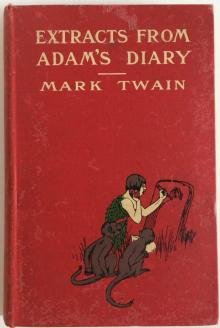 Extracts from Adam's Diary, translated from the original ms.
Extracts from Adam's Diary, translated from the original ms. A Tramp Abroad
A Tramp Abroad The Best Short Works of Mark Twain
The Best Short Works of Mark Twain Humorous Hits and How to Hold an Audience
Humorous Hits and How to Hold an Audience The Speculative Fiction of Mark Twain
The Speculative Fiction of Mark Twain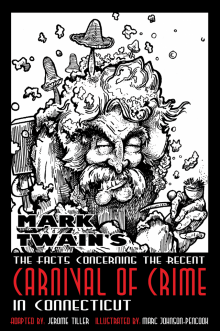 The Facts Concerning the Recent Carnival of Crime in Connecticut
The Facts Concerning the Recent Carnival of Crime in Connecticut Alonzo Fitz, and Other Stories
Alonzo Fitz, and Other Stories The $30,000 Bequest, and Other Stories
The $30,000 Bequest, and Other Stories Pudd'nhead Wilson and Those Extraordinary Twins
Pudd'nhead Wilson and Those Extraordinary Twins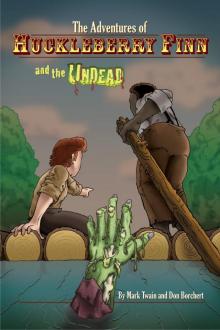 The Adventures of Huckleberry Finn and the Undead
The Adventures of Huckleberry Finn and the Undead Sketches New and Old
Sketches New and Old The Man That Corrupted Hadleyburg
The Man That Corrupted Hadleyburg A Tramp Abroad — Volume 06
A Tramp Abroad — Volume 06 A Tramp Abroad — Volume 02
A Tramp Abroad — Volume 02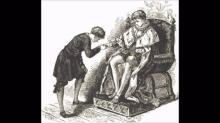 The Prince and the Pauper, Part 1.
The Prince and the Pauper, Part 1. Adventures of Huckleberry Finn, Chapters 16 to 20
Adventures of Huckleberry Finn, Chapters 16 to 20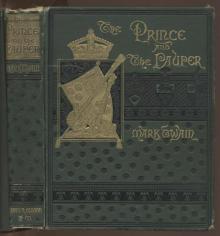 The Prince and the Pauper, Part 9.
The Prince and the Pauper, Part 9. Adventures of Huckleberry Finn, Chapters 21 to 25
Adventures of Huckleberry Finn, Chapters 21 to 25 Tom Sawyer, Detective
Tom Sawyer, Detective A Tramp Abroad (Penguin ed.)
A Tramp Abroad (Penguin ed.) Adventures of Huckleberry Finn, Chapters 36 to the Last
Adventures of Huckleberry Finn, Chapters 36 to the Last The Mysterious Stranger, and Other Stories
The Mysterious Stranger, and Other Stories A Tramp Abroad — Volume 03
A Tramp Abroad — Volume 03 The Adventures of Tom Sawyer, Part 3.
The Adventures of Tom Sawyer, Part 3. Adventures of Huckleberry Finn, Chapters 06 to 10
Adventures of Huckleberry Finn, Chapters 06 to 10_preview.jpg) The Adventures of Huckleberry Finn (Tom Sawyer's Comrade)
The Adventures of Huckleberry Finn (Tom Sawyer's Comrade)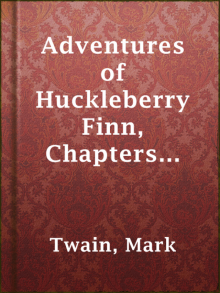 Adventures of Huckleberry Finn, Chapters 31 to 35
Adventures of Huckleberry Finn, Chapters 31 to 35 The Man That Corrupted Hadleyburg, and Other Stories
The Man That Corrupted Hadleyburg, and Other Stories A Tramp Abroad — Volume 07
A Tramp Abroad — Volume 07 Editorial Wild Oats
Editorial Wild Oats Adventures of Huckleberry Finn, Chapters 26 to 30
Adventures of Huckleberry Finn, Chapters 26 to 30 1601: Conversation as it was by the Social Fireside in the Time of the Tudors
1601: Conversation as it was by the Social Fireside in the Time of the Tudors A Tramp Abroad — Volume 05
A Tramp Abroad — Volume 05 Sketches New and Old, Part 1.
Sketches New and Old, Part 1. The Adventures of Tom Sawyer, Part 2.
The Adventures of Tom Sawyer, Part 2. A Connecticut Yankee in King Arthur's Court, Part 8.
A Connecticut Yankee in King Arthur's Court, Part 8. A Tramp Abroad — Volume 01
A Tramp Abroad — Volume 01 The Adventures of Tom Sawyer, Part 5.
The Adventures of Tom Sawyer, Part 5. Adventures of Huckleberry Finn, Chapters 01 to 05
Adventures of Huckleberry Finn, Chapters 01 to 05 A Connecticut Yankee in King Arthur's Court, Part 1.
A Connecticut Yankee in King Arthur's Court, Part 1.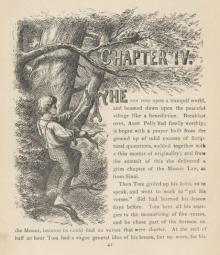 The Adventures of Tom Sawyer, Part 4.
The Adventures of Tom Sawyer, Part 4. A Connecticut Yankee in King Arthur's Court, Part 2.
A Connecticut Yankee in King Arthur's Court, Part 2. The Adventures of Tom Sawyer, Part 7.
The Adventures of Tom Sawyer, Part 7. A Connecticut Yankee in King Arthur's Court, Part 3.
A Connecticut Yankee in King Arthur's Court, Part 3. Sketches New and Old, Part 4.
Sketches New and Old, Part 4. Sketches New and Old, Part 3.
Sketches New and Old, Part 3. A Connecticut Yankee in King Arthur's Court, Part 7.
A Connecticut Yankee in King Arthur's Court, Part 7. A Connecticut Yankee in King Arthur's Court, Part 5.
A Connecticut Yankee in King Arthur's Court, Part 5. A Connecticut Yankee in King Arthur's Court, Part 6.
A Connecticut Yankee in King Arthur's Court, Part 6. A Connecticut Yankee in King Arthur's Court, Part 4.
A Connecticut Yankee in King Arthur's Court, Part 4. Sketches New and Old, Part 2.
Sketches New and Old, Part 2. Sketches New and Old, Part 6.
Sketches New and Old, Part 6. Adventures of Huckleberry Finn, Chapters 11 to 15
Adventures of Huckleberry Finn, Chapters 11 to 15 Personal Recollections of Joan of Arc
Personal Recollections of Joan of Arc Sketches New and Old, Part 5.
Sketches New and Old, Part 5. Eve's Diary, Part 3
Eve's Diary, Part 3 Sketches New and Old, Part 7.
Sketches New and Old, Part 7.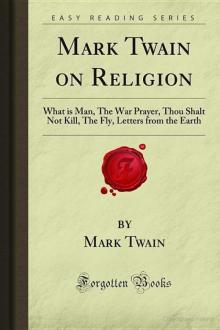 Mark Twain on Religion: What Is Man, the War Prayer, Thou Shalt Not Kill, the Fly, Letters From the Earth
Mark Twain on Religion: What Is Man, the War Prayer, Thou Shalt Not Kill, the Fly, Letters From the Earth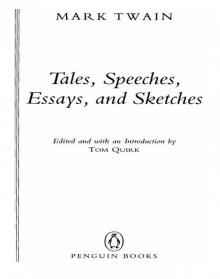 Tales, Speeches, Essays, and Sketches
Tales, Speeches, Essays, and Sketches A Connecticut Yankee in King Arthur's Court, Part 9.
A Connecticut Yankee in King Arthur's Court, Part 9. Our Fellow Savages of the Sandwich Islands (version 1)
Our Fellow Savages of the Sandwich Islands (version 1) 1601
1601 Letters from the Earth
Letters from the Earth Curious Republic Of Gondour, And Other Curious Whimsical Sketches
Curious Republic Of Gondour, And Other Curious Whimsical Sketches The Mysterious Stranger
The Mysterious Stranger Life on the Mississippi
Life on the Mississippi Roughing It
Roughing It Alonzo Fitz and Other Stories
Alonzo Fitz and Other Stories The 30,000 Dollar Bequest and Other Stories
The 30,000 Dollar Bequest and Other Stories The Adventures of Huckleberry Finn taots-2
The Adventures of Huckleberry Finn taots-2 A Double-Barreled Detective Story
A Double-Barreled Detective Story adam's diary.txt
adam's diary.txt A Horse's Tale
A Horse's Tale Autobiography Of Mark Twain, Volume 1
Autobiography Of Mark Twain, Volume 1 The Comedy of Those Extraordinary Twins
The Comedy of Those Extraordinary Twins Following the Equator
Following the Equator Goldsmith's Friend Abroad Again
Goldsmith's Friend Abroad Again No. 44, The Mysterious Stranger
No. 44, The Mysterious Stranger The Stolen White Elephant
The Stolen White Elephant The $30,000 Bequest and Other Stories
The $30,000 Bequest and Other Stories The Curious Republic of Gondour, and Other Whimsical Sketches
The Curious Republic of Gondour, and Other Whimsical Sketches Prince and the Pauper (Barnes & Noble Classics Series)
Prince and the Pauper (Barnes & Noble Classics Series) The Portable Mark Twain
The Portable Mark Twain Connecticut Yankee in King Arthur's Court (Barnes & Noble Classics Series)
Connecticut Yankee in King Arthur's Court (Barnes & Noble Classics Series)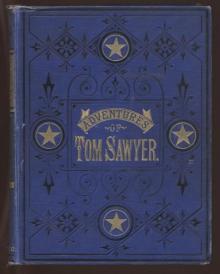 The Adventures of Tom Sawyer taots-1
The Adventures of Tom Sawyer taots-1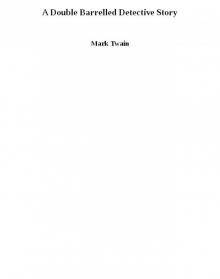 A Double Barrelled Detective Story
A Double Barrelled Detective Story Eve's Diary
Eve's Diary A Dog's Tale
A Dog's Tale The Mysterious Stranger Manuscripts (Literature)
The Mysterious Stranger Manuscripts (Literature) The Complete Short Stories of Mark Twain
The Complete Short Stories of Mark Twain What Is Man? and Other Essays
What Is Man? and Other Essays The Adventures of Huckleberry Finn
The Adventures of Huckleberry Finn Adventures of Huckleberry Finn and Zombie Jim
Adventures of Huckleberry Finn and Zombie Jim Who Is Mark Twain?
Who Is Mark Twain? Christian Science
Christian Science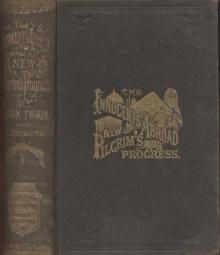 The Innocents Abroad
The Innocents Abroad Some Rambling Notes of an Idle Excursion
Some Rambling Notes of an Idle Excursion Autobiography of Mark Twain
Autobiography of Mark Twain Those Extraordinary Twins
Those Extraordinary Twins Autobiography of Mark Twain: The Complete and Authoritative Edition, Volume 1
Autobiography of Mark Twain: The Complete and Authoritative Edition, Volume 1